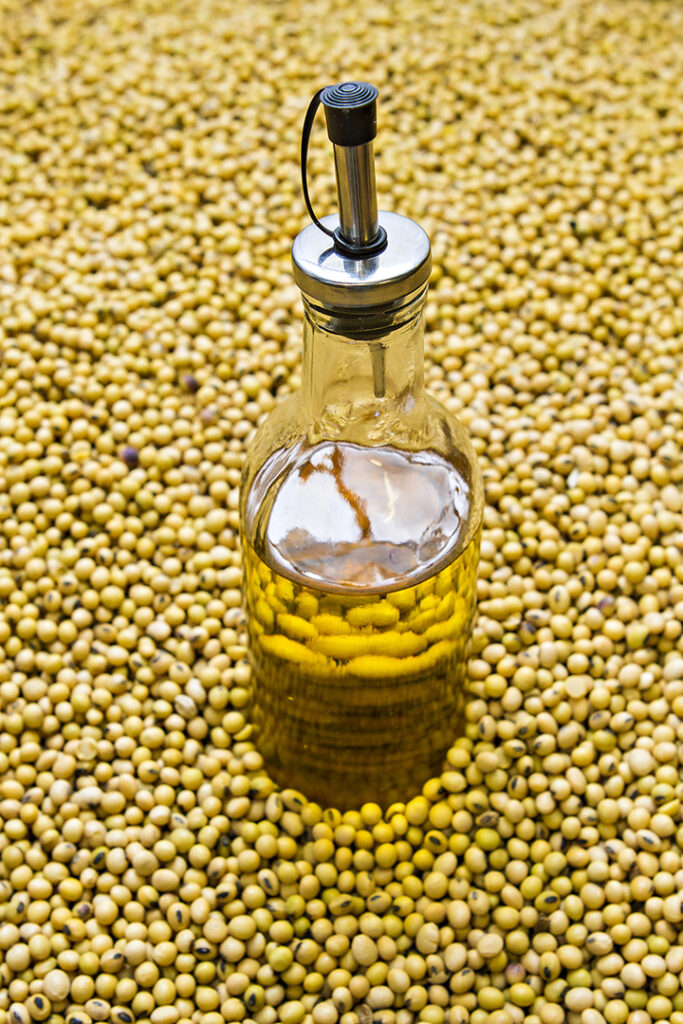
In a three-part series, the Missouri Soybean Merchandising Council (MSMC) outlines its success with funding a soybean trait research project from the ground floor to efforts now that go beyond state lines to bring new, value-added commercial production opportunities to U.S. farmers.
The Partnerships, Patents and Licensing Behind SOYLEIC Success
By Barb Baylor Anderson
It’s been about a decade since University of Missouri Delta Research Center retired soybean breeder Grover Shannon and USDA scientist Kristin Bilyeu discovered the soybean variant that produces three to four times more oleic acid than other conventional varieties. During that time, soybean breeders across the Midwest have been collaborating to incorporate the trait into most maturity groups and scale up seed production to make the varieties available to farmers.
“It was clear that we needed to protect the rights to the discovery with a patent,” says John Kelley, a farmer from Faucett, Mo., and past chairman of the MSMC. “We encouraged staff to pursue the patent after we discussed the option fully as a board to decide if we should devote soybean checkoff dollars to it. We looked at the possibility of this becoming a viable opportunity for our farmers to increase profits, something that we all strive for to guide our decisions.”

To that end, a partnership between the University of Missouri, USDA, the Missouri Soybean Merchandising Council and United Soybean Board led to U.S. Patent No. 9,035,129 being issued in 2015 for the “method to produce soybeans with high oleic acid content developed through soybean breeding.” The curators of the University of Missouri and the USDA Agricultural Research Service (ARS) are joint owners of the patent and MSMC is the exclusive licensee.
“Seed companies routinely protect their seed and traits with patents,” says Kyle Durham, a farmer from Norborne, Mo., and current MSMC chairman. “It is necessary and a big deal for us to reinvest and maintain ownership for farmers. Farmers are not breeders, but we are forward-thinking investors, so we have put into place the legal and licensing expertise we need.”
MSMC hired Bryan Stobaugh in 2017 as its director of licensing to manage the high-oleic investment and help get it into the marketplace. “In the world of seed, that means getting it back into farmers’ hands,” he says. “Every time we do, the technology or royalty associated with the per-bag sale brings value back to the research and for farmers. We focus on items we know will bring a return in the field.”
MSMC trademarked the conventional high oleic seed trait in 2018 as SOYLEIC®. Revenues generated through licensing and commercialization agreements help to bolster continued work of the checkoff-funded research program and expand it into other areas of crop improvement, whether it be increased yield potential, drought tolerance or pest and disease resistance, as well as growing demand for soybeans.
Brian Diers, University of Illinois soybean breeder, is working on combining the high oleic trait with reduced oligosaccharides, another high-value trait that enhances soybean meal.
“Oligosaccharides reduce the energy non-ruminants, like pigs and poultry, can obtain from soybean meal,” he says. “By increasing the energy available to animals, we will have a higher value soybean. That will help offset the cost of identity preservation with both a high-value oil and a high-value meal. And we can probably add other traits, too.”
Diers notes since SOYLEIC is a non-GMO soybean, adding an approved GMO trait, such as herbicide resistance, is much easier than if it was a GMO because new combinations of GMO traits need to go through a lengthy and costly approval process. In addition, non-GMO traits are increasingly commanding premiums paid to farmers.
“I can’t be more excited about the fact that I get to see this go to market,” Stobaugh says. “This research will give farmers across the nation the opportunity to access varieties with the SOYLEIC trait from our partner, public universities.”
“High oleic is good for farmers and for consumers. It is a win-win,” says Kelley. “Partnerships make all of this possible and are vital to success. From the breeders who discovered the trait to the end product, it would have been impossible for one entity to put it all together.”
Part 3: Farmers Set Up Promising SOYLEIC Program For Long-Term Success
Part 1: Missouri Farmers Fund Promising Trait Development
The post SOYLEIC Success – Part 2 appeared first on Soybean Research & Information Network.